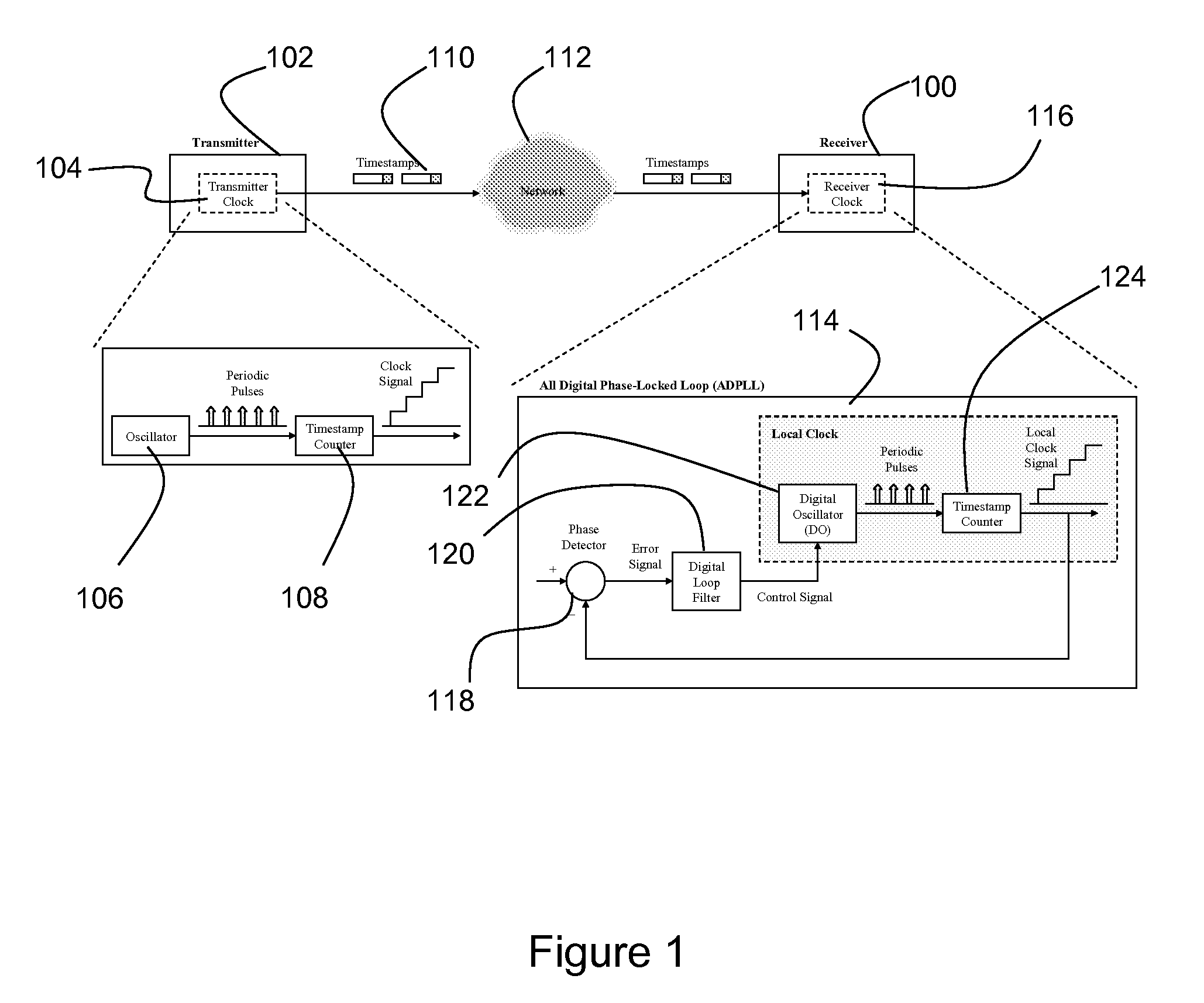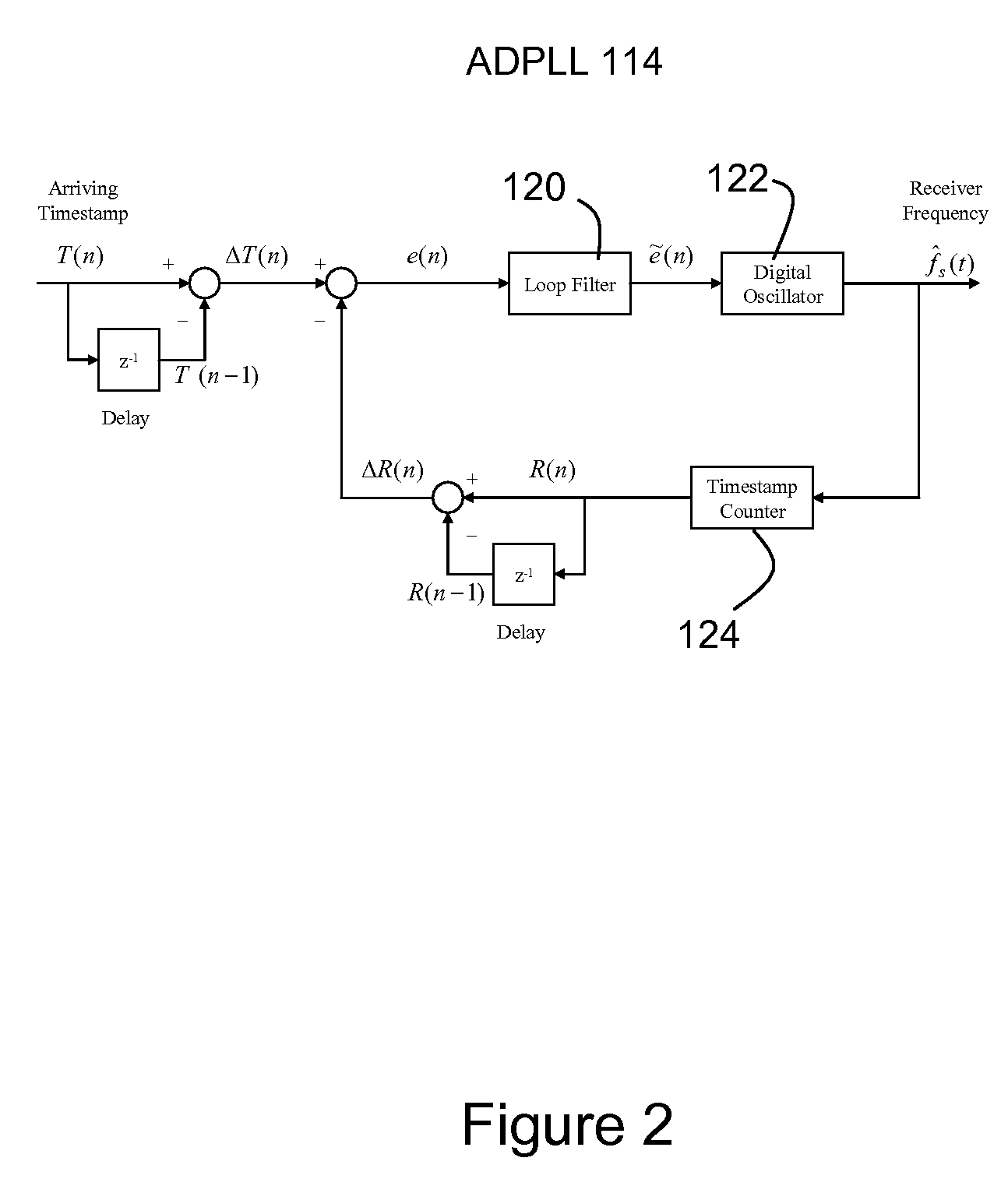Timestamp-based all digital phase locked loop for clock synchronization over packet networks
a clock synchronization and packet network technology, applied in the field of network communication, can solve the problems of residual jitter up to the receiver clock signal, and achieve the effects of reducing jitter and noise in error signals, and being inexpensive to fabrica
- Summary
- Abstract
- Description
- Claims
- Application Information
AI Technical Summary
Benefits of technology
Problems solved by technology
Method used
Image
Examples
Embodiment Construction
[0025]A block diagram of a clock synchronization technique based on timestamps is shown in FIG. 1. This technique enables multiple receivers (100) (only one receiver is illustrated) to synchronize their clocks to a transmitter (102). Examples of multiple receivers include broadcast and point-to-multipoint communications. The transmitter (102) includes a clock (104) having an oscillator (106) and a timestamp counter (108). The oscillator issues periodic pulses that are communicated to the timestamp counter. The timestamp counter is operable to count the pulses. The output of the timestamp counter represents the transmitter clock signal, and is incremented by a fixed amount at each pulse. Samples of transmitter clock signals are communicated to the receiver as timestamps (110) via a network (112).
[0026]An all digital phase locked loop (“ADPLL”) (114) in a clock (116) at the receiver (100) uses the timestamps (110) as a reference signal to synchronize the receiver clock (116) with the ...
PUM
 Login to View More
Login to View More Abstract
Description
Claims
Application Information
 Login to View More
Login to View More - R&D
- Intellectual Property
- Life Sciences
- Materials
- Tech Scout
- Unparalleled Data Quality
- Higher Quality Content
- 60% Fewer Hallucinations
Browse by: Latest US Patents, China's latest patents, Technical Efficacy Thesaurus, Application Domain, Technology Topic, Popular Technical Reports.
© 2025 PatSnap. All rights reserved.Legal|Privacy policy|Modern Slavery Act Transparency Statement|Sitemap|About US| Contact US: help@patsnap.com



